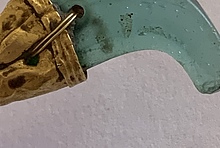Home PageAbout MindatThe Mindat ManualHistory of MindatCopyright StatusWho We AreContact UsAdvertise on Mindat
Donate to MindatCorporate SponsorshipSponsor a PageSponsored PagesMindat AdvertisersAdvertise on Mindat
Learning CenterWhat is a mineral?The most common minerals on earthInformation for EducatorsMindat ArticlesThe ElementsThe Rock H. Currier Digital LibraryGeologic Time
Minerals by PropertiesMinerals by ChemistryAdvanced Locality SearchRandom MineralRandom LocalitySearch by minIDLocalities Near MeSearch ArticlesSearch GlossaryMore Search Options
The Mindat ManualAdd a New PhotoRate PhotosLocality Edit ReportCoordinate Completion ReportAdd Glossary Item
Mining CompaniesStatisticsUsersMineral MuseumsClubs & OrganizationsMineral Shows & EventsThe Mindat DirectoryDevice SettingsThe Mineral Quiz
Photo SearchPhoto GalleriesSearch by ColorNew Photos TodayNew Photos YesterdayMembers' Photo GalleriesPast Photo of the Day GalleryPhotography
╳Discussions
💬 Home🔎 Search📅 LatestGroups
EducationOpen discussion area.Fakes & FraudsOpen discussion area.Field CollectingOpen discussion area.FossilsOpen discussion area.Gems and GemologyOpen discussion area.GeneralOpen discussion area.How to ContributeOpen discussion area.Identity HelpOpen discussion area.Improving Mindat.orgOpen discussion area.LocalitiesOpen discussion area.Lost and Stolen SpecimensOpen discussion area.MarketplaceOpen discussion area.MeteoritesOpen discussion area.Mindat ProductsOpen discussion area.Mineral ExchangesOpen discussion area.Mineral PhotographyOpen discussion area.Mineral ShowsOpen discussion area.Mineralogical ClassificationOpen discussion area.Mineralogy CourseOpen discussion area.MineralsOpen discussion area.Minerals and MuseumsOpen discussion area.PhotosOpen discussion area.Techniques for CollectorsOpen discussion area.The Rock H. Currier Digital LibraryOpen discussion area.UV MineralsOpen discussion area.Recent Images in Discussions
Identity HelpWhere to send specimen for testing
18th Aug 2016 12:43 UTCJennifer Cindrich
18th Aug 2016 14:36 UTCDon Saathoff Expert
Since we do not know at what level in the hobby you are, before we attempt to answer your question I'd like to ask a couple.
Where in Central Texas do you live? My wife lived in San Antonio for ~50 years & hunted Texas for ~40 of those years.
Are you aware (by definition) of the difference between a 'rock' and a 'mineral'? A rock is a combination of minerals and if you have a rock we need to know at what level you want the analysis - whole rock for quantities of elements present or just the accepted name of the rock. If you are asking about a single mineral species in a relatively pure sample (homogenous) do you have enough sample to sacrifice a couple of milligrams or so?
And you could take a focused and well exposed pic of the sample, upload to Mindat's Identification forum and give us a shot at helping!! We're FREE!!
Don S.
18th Aug 2016 14:53 UTCDonald Lapham 🌟
I second Don's suggestion to post a picture.
I also recommend Kerry Day. His service is $8 USD/Qualitative analysis. Please see the SEM-EDS section of his web site http://kaygeedeeminerals.com for details.
18th Aug 2016 16:19 UTCJennifer Cindrich
I know is is calcite but I wanted to know all of the elements present. I have enough to sacrifice. I will post pictures also just for you guys to guess. I don't know how to rate myself as far as what level I am at as a rockhounder. I like it a lot and do it in all of my spare time. I have a degree in Environmental management and have taken some geology classes.
I can say I am a beginner at collecting florescent minerals, which is where my confusion is at presently.
The calcite pieces I have found on my property are fluorescent (purple and yellow), and phosphorescent with UV and regular white light. Some pieces are only calcite yet others are obviously other elements mixing in with it and I wanted to know what, besides the limestone some pieces are embedded in.
I love ya'lls website! I live in central Texas in Blanco county on the edge of the Llano uplift. Very cool rocks here!
18th Aug 2016 16:48 UTCKyle Beucke 🌟
Florin Analytical Services does this. They have a $150 minimum order.
Others will probably know a lot more about this stuff, but there is one possibility. One caveat: Bulk analysis will tell you what is in the rock sample down to a low concentration, but not how it is distributed. Could be a tiny mineral grain that went unnoticed. If you want to know what is in a specific grain/crystal, microprobe, etc. would be an option. Con here is that it is a spot analysis, so you have to assume composition is uniform. Different methods for different purposes.
Kyle
18th Aug 2016 16:48 UTCJennifer Cindrich
18th Aug 2016 17:19 UTCMatt Neuzil Expert
If you are curious why calcite fluoresces, i believe its most commonly uranium or manganese ions.
18th Aug 2016 17:43 UTCRob Woodside 🌟 Manager
18th Aug 2016 19:23 UTCJennifer Cindrich

19th Aug 2016 00:05 UTCRobert Rothenberg
Just for the record, Kerry Day charges US $10 for an analysis. I have used his services often and have been very happy.
Bob
19th Aug 2016 00:24 UTCKyle Beucke 🌟
The OP said she wanted to know exactly what is in the rock. EDS will tell you what the composition is, but on a specific spot, and there is a high lower limit if you are concerned with trace elements. Again, every method has its strengths and weaknesses. Bulk analysis will tell you if there is 50 ppm, etc. of some element in the rock/mineral.
Kyle




Mindat.org is an outreach project of the Hudson Institute of Mineralogy, a 501(c)(3) not-for-profit organization.
Copyright © mindat.org and the Hudson Institute of Mineralogy 1993-2024, except where stated. Most political location boundaries are © OpenStreetMap contributors. Mindat.org relies on the contributions of thousands of members and supporters. Founded in 2000 by Jolyon Ralph.
Privacy Policy - Terms & Conditions - Contact Us / DMCA issues - Report a bug/vulnerability Current server date and time: May 14, 2024 13:01:35
Copyright © mindat.org and the Hudson Institute of Mineralogy 1993-2024, except where stated. Most political location boundaries are © OpenStreetMap contributors. Mindat.org relies on the contributions of thousands of members and supporters. Founded in 2000 by Jolyon Ralph.
Privacy Policy - Terms & Conditions - Contact Us / DMCA issues - Report a bug/vulnerability Current server date and time: May 14, 2024 13:01:35










